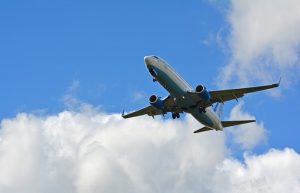
Turbofans are one of the most common types of airplane engines. A type of air-breathing jet engine, they offer a unique combination of power and efficiency. Turbofans feature a ducted fan that draws air into a combustion chamber where it’s mixed with fuel before being burned. Here are six common myths about turbofans.
#1) All Air Enters the Core
Not all of the air drawn by the ducted fan enters the core. Turbofans are designed specifically so that some air enters the core and some air bypasses the core. The term “bypass ratio” is used to describe the ratio of the air that bypasses the core. A 2:1 bypass ratio means that for every 1 kilogram of air that enters the core, 2 kilograms of air will go around the core.
#2) Same as Turbojets
They may have similar names, but tubofans aren’t the same as turbojets. Turbofans are more advanced. As their name suggests, they are characterized by the presence of a fan, which is designed to draw air into, as well as around, the core of the engine. Turbojets have a much smaller fan, which is designed to draw all of the air into the core.
#3) Only Run on Jet Fuel
Another common myth is that turbofans only run on jet fuel. While most of them do, in fact, use jet fuel, some turbofans use alternative types of fuel. Some of them run on biofuels, for instance, whereas other turbofans run on sustainable aviation fuels (SAFs). Alternative fuel types such as these are designed to minimize carbon emissions.
#4) Larger Turbofans Are More Efficient
Larger turbofans aren’t necessarily more efficient than smaller turbofans. Many factors play a role in the efficiency of a turbofan, one of the most influential being the bypass ratio. Turbofans with a high bypass ratio are typically more efficient than those with a low bypass ratio. A high bypass ratio reduces the speed of exhaust gases and lowers fuel consumption, resulting in improved efficiency.
#5) Load
Many people assume that turbofans are loud. Some of the first turbofans were, in fact, loud, but advancements in modern aviation have significantly reduced their noise level. The advent of technologies like improved fan blades and chevron nozzles allow for much quieter turbofans.
#6) Not Designed for High Altitudes
This myth couldn’t be further from the truth. Turbofans are very effective at high altitudes, which is why so many commercial airliners use them. Turbofans are actually most effective at a cruising altitude of 30,000 to 40,000 feet. The cool, thin air at altitudes such as this improves their efficiency.



